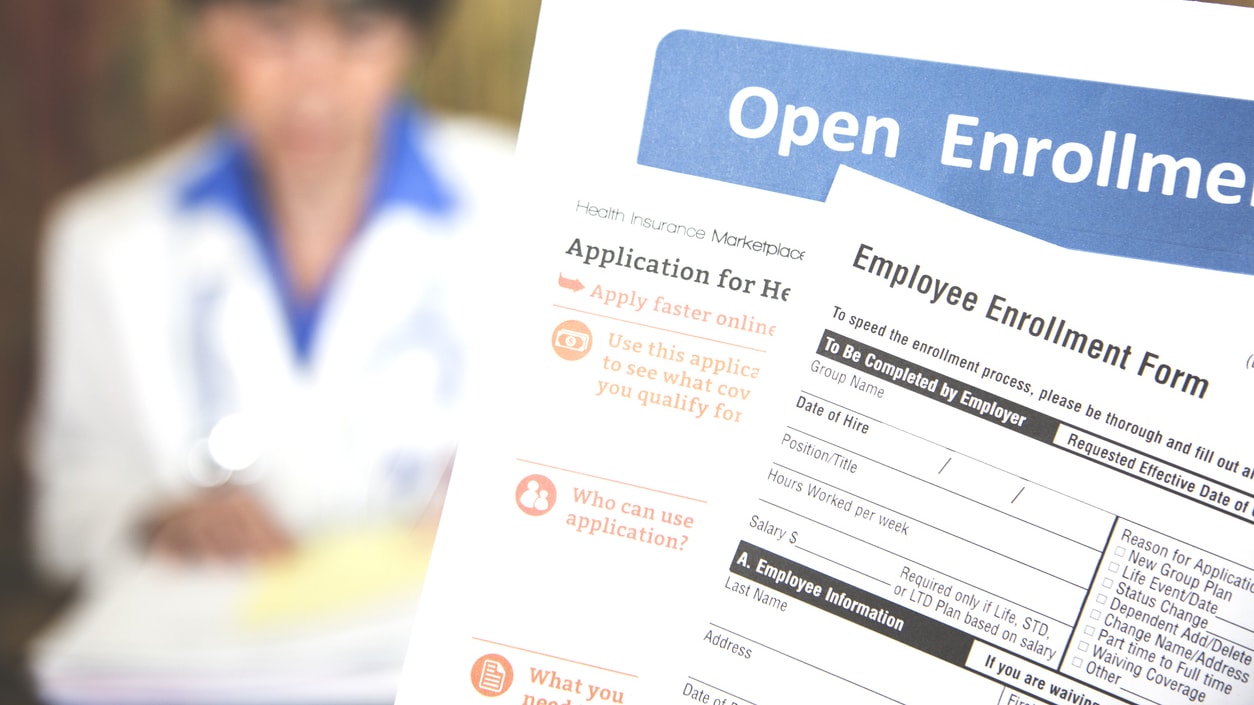Ahead of open enrollment, employees are preparing for a rise in their benefits costs in 2024, with more worrying about increased costs this year than last, when inflation was red-hot.
A new survey from financial services firm Voya finds that a majority (79 percent) of working Americans strongly or somewhat agree that they are worried their workplace benefits will cost them more this open enrollment season because of inflation. That's an increase from 66 percent in June 2022, when inflation was at its peak.
"While inflation has moderated, many individuals are still experiencing strain from elevated prices," explained Nate Black, vice president of health solutions product development at Voya. The survey also found that 88 percent of individuals feel their money does not go as far as it used to. "Understandably, many have concerns heading into open enrollment when it comes to what it might be costing them this year," Black said.
Workers' concerns may be justified, as Voya's findings come on the heels of several reports predicting increased health care costs next year. Professional services firm Aon reported that average costs for U.S. employers that pay for their employees' health care could increase 8.5 percent to more than $15,000 per employee in 2024, while the International Foundation of Employee Benefit Plans (IFEBP) found that U.S. corporate employers project a median health care cost increase of 7 percent for 2024.
"What we're seeing is certainly the impact of inflation overall and what that is doing for some of the medical trends, what it's doing to supply and labor shortages and costs of goods and services, and shortages in supplies and staffing and how that's impacting providers," Julie Stich, vice president of content at IFEBP, told SHRM Online in August. "And those costs are being passed along to employers."
Despite the projected spike in health care costs—fueled in part by rising prescription drug prices, catastrophic claims and chronic conditions—many employers said they are hesitant to pass those increases along to employees as the labor market is still competitive. But even though that may not be a common strategy, some employers do plan to pass along higher costs to employees.
Pay Off Debts or Save for Retirement, Emergencies?
Black said health care isn't the only benefits cost concern for employees. "While health benefits remain a clear concern, many individuals today are faced with competing financial decisions—including things like student loan debt, being able to save for retirement and the ability to save for an emergency fund, which continue to be important considerations for individuals when it comes to their holistic financial outlook," he explained.
In fact, 62 percent of workers see inflation as an obstacle to saving for a comfortable retirement, a big jump from 45 percent in 2022, according to recent data from Charles Schwab.
Employees Review Their Options
Voya found that 72 percent of employed Americans agree that, because of inflation, they will spend more time reviewing their benefit elections during open enrollment to help them get the most from their options.
"When it comes to open enrollment, we often see individuals hit the reset button by enrolling in the benefits they enrolled in the year prior," Black said, adding that on average, employees spend just 18 minutes making 17 enrollment benefit decisions. "Inertia can play a big role for employees in making benefit changes."
But that is likely to change this year—and employers and HR teams can help employees by providing more education about how to best select their benefits and how to stretch their dollars further.
"Employees are more satisfied with their benefits and are more likely to proactively add other coverage to fill any gaps in their package when they can take advantage of a personal connection," Kim Buckey, vice president of client services at Optavise, a Carmel, Ind.-based benefits administration firm, told SHRM Online in August.
That's one positive change, and while employers can better help employees consider their benefits, there are other things they can do to address employees' cost concerns, Black said.
He recommended employers "look holistically across benefits and employee needs." Also, employers should educate employees about benefits that could help them financially not just at open enrollment, but year round.
"That may help employees better utilize their benefits and potentially save more effectively, and it could also encourage greater confidence and reduce stress," Black said.
An organization run by AI is not a futuristic concept. Such technology is already a part of many workplaces and will continue to shape the labor market and HR. Here's how employers and employees can successfully manage generative AI and other AI-powered systems.




